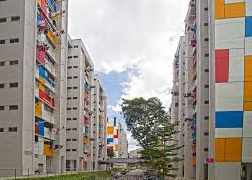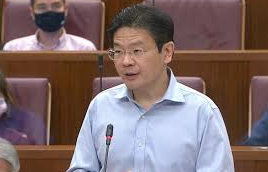Addressing the urgent need for healthcare reforms amidst staffing shortages and rising demand.
Keenan, a 38-year-old business owner, found himself in a race against time when his wife suffered a stroke, requiring urgent treatment at Tan Tock Seng Hospital. Upon their arrival at the emergency department on August 29, 2022, they were relieved to receive immediate medical attention—critical in the early hours following a stroke.
However, the relief was short-lived. Keenan observed the emergency room’s chaos, with nurses darting to assist anxious patients and doctors quickly moving in and out, their expressions hidden behind masks. The tension in the air was palpable as hushed conversations among visitors broke the sterile atmosphere. Despite the stress, no one dared to raise their voice; everyone understood the healthcare workers were doing their utmost.
After a grueling 12-hour wait, Keenan and his wife were finally assigned a hospital bed. Unfortunately, this was not an isolated incident. Waiting times for admissions at public hospitals surged in the following weeks, with some patients reportedly waiting as long as 50 hours.
Healthcare’s Staffing Crisis
A month later, the Ministry of Health assured the public that admission times had improved following a peak of 50-hour waits. Minister Ong Ye Kung announced plans to add 1,900 public hospital beds over the next five years to alleviate pressure on emergency departments.
The bed shortage in Singapore’s public hospitals is not a new problem. The last significant crisis occurred in 2014, which was then addressed by simply increasing the number of hospital beds. While the number of beds rose from 9,071 in 2018 to 9,610 in 2020, whether this will effectively prevent future shortages remains uncertain. History suggests it may not, especially with the fast-evolving nature of infectious diseases like COVID-19.
Simply adding beds is akin to a crowded restaurant acquiring more plates without hiring additional chefs. In this analogy, healthcare professionals are the chefs in a kitchen already stretched too thin. The solution to the manpower shortage in healthcare requires increasing the number of foreign healthcare workers in Singapore’s public hospitals.
Addressing Xenophobia
Despite the clarity of this objective, the suggestion remains contentious. Xenophobic sentiments often arise, framing foreign workers as a threat to local jobs. A recent tender by the Ministry of Health Holdings (MOHH) aimed at recruiting doctors from India sparked intense online debate, revealing deep-seated fears and misconceptions about foreign medical professionals.
Concerns over the qualifications of foreign doctors from countries perceived as having weaker healthcare systems have been prevalent. Critics have raised alarms over reported incidents of fraud in India’s medical education system, questioning the capabilities of potential hires.
In response, MOHH clarified that over 90 percent of its doctors are local and acknowledged that efforts to attract Singaporean doctors working abroad are already underway. “There’s a prejudice against foreign doctors that we need to address,” asserts Madelyn, a 25-year-old medical officer. “Just because they come from another country doesn’t mean they can’t provide excellent healthcare.”
While concerns about foreign workers taking local jobs persist, it’s important to recognize that these positions are often unfilled. Foreign healthcare professionals—doctors, nurses, and pharmacists—are essential to maintaining a healthy public healthcare system, and personal biases should not hinder this necessity.
Healthcare Workers Under Pressure
Sherry, a 25-year-old healthcare worker, recounted her experience after being hospitalized on National Day. She spent four days on a makeshift trolley bed before finally being moved to a proper hospital bed. Despite her non-critical condition, she empathized with the overstretched staff. “The nurses are either running around attending to queries or tending to patients. It’s very difficult to get their attention,” she observed.
To alleviate the burden on current healthcare workers, Singapore’s medical schools have increased their student intake by approximately 60 percent over the past decade. However, this has coincided with an exodus of foreign healthcare professionals, driven away by burnout and better working conditions elsewhere.
A study by the Saw Swee Hock School of Public Health highlighted overwork and emotional exhaustion as major factors contributing to burnout among healthcare workers in Singapore. Many foreign nurses report feeling more valued and respected in countries like the United States, where better compensation and immigration opportunities exist.
The Complexities of Patient Discharges
Even with more beds and doctors, long waiting times in hospitals are not easily resolved. One significant factor affecting these times is bed turnover rates. Discharging a patient involves more than determining their medical readiness; healthcare workers must also consider the patient’s social circumstances after treatment.
“Discharges don’t typically happen at night because it can be difficult for families to pick up patients,” Yan, a junior doctor, explains. “This adds to waiting times, which we cannot control.”
Additionally, there is a growing tendency for doctors to grant patients longer hospital stays out of fear of legal repercussions. The practice of medicine has become increasingly defensive, leading to further delays in patient turnover.
A Call for Understanding
“Every system is currently stretched, and we are doing everything we can to provide the best care,” Yan emphasizes. “Sometimes we just can’t get you a ward. It’s not that we don’t want to—there just aren’t enough to go around.”
For Keenan, waiting for updates on his wife’s condition in a public hospital was excruciating. Fortunately, he had the means to seek private healthcare, where he received more attentive care. “We were privileged to explore different opinions on my wife’s condition. Of course, it costs more, but it gave us a better sense of her treatment plan,” he said.
Public healthcare remains the primary option for many Singaporeans, especially those without financial means.
A Growing Healthcare Demand
Sufficient hospital beds for Singapore’s entire population is a lofty goal. The nation may need to consider reclaiming land to accommodate more healthcare facilities. However, relying solely on local healthcare professionals is unrealistic; not everyone aspires to be a doctor. Even if more spots are opened in local medical schools, the sector will still face staffing shortages.
To address this pressing issue, Singapore must be willing to attract foreign healthcare professionals. While this solution may not sit well with everyone, it is essential for sustaining the healthcare system. For a small nation of 6 million people, decisive action is required to ensure the continued viability of its healthcare system.








